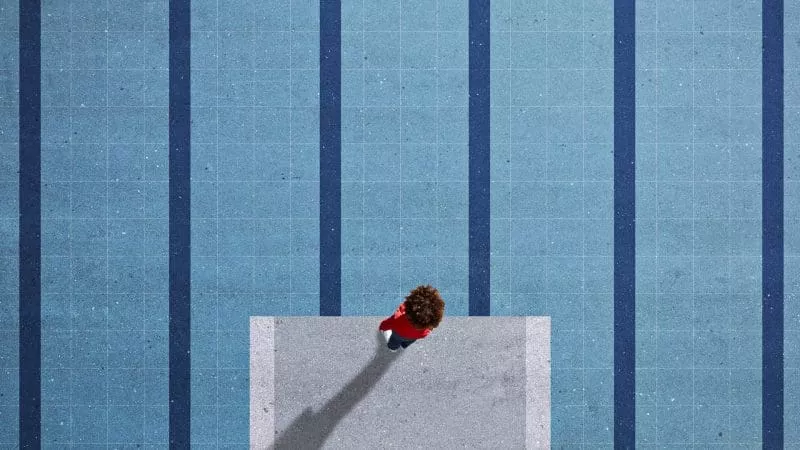Insight
Creativity is an engine of growth in competitive times. Here is how to utilize it.
Just when all industries are being challenged to innovate, creativity seems to be receding – Rik Haslam explores why.

Solving modern business problems requires creative thinking, as much as data and analytics. Forrester shows that more creative businesses experience 2.6 times faster growth than their peers. Yet just when all industries are being challenged to innovate, creativity seems to be receding, ad agencies are culling staff, and design thinking appears to be in retreat.
Some of the strongest examples of creative thinking come through partnerships between a bold client lead and a creative partner. Take Oatly, for example. In 2012, the business – known for its distinctive product and advertising – put creative at the centre of its operations. CEO Tony Petersson is a staunch believer in the power of creativity and his close relationship with Global Chief Creative Officer, John Schoolcraft, helped the drive incredible business growth.
Under Petersson and Schoolcraft’s leadership, Oatly didn’t operate with a traditional marketing department; instead, they introduced a department of mind control that empowered creativity and impacted not just communications, but the business culture and operations as whole.
So how can leaders, with training rooted in the logical rather than the imaginative, sharpen their creativity, lean into bold new ways of operating, and enable decision-making processes that facilitate creativity?
Trusting the creative process
The path to greatness is not always paved with A/B tests and step-by-step instructions.
One barrier is that many client stakeholders aren’t equipped with the tools or experience to effectively judge what makes for a good idea: frequently, senior stakeholders haven’t been involved from early enough in the process. This may mean standout creativity is dismissed without a full appreciation of the context or strategy that’s underpinning the work.
There are two issues here:
1. People often use purely subjectively criteria
When judging creative work, leaders should be asking questions like “Is the creative on brief?”, “Will this create standout and get us noticed?”, “How will my audience respond to this and what evidence do I have to support this?”, “Is the work on-brand?”, “What’s are we hoping to achieve with this idea?”, etc.
Unfortunately, busy stakeholders whose day-to-day jobs don’t involve judging creative work, can understandably fall back on gut feeling and make rash judgements based on “Do I like this?”. This question will often produce a negative, subjective response which will be the death knell for most original ideas as they tend to be inherently divisive.
A way to avoid this trap is to provide all stakeholders with a list of strategic questions and criteria against which to judge creative. Interrogating the work using a more strategic framework helps orient everyone around underlying goals and keeps the focus on the opportunity for impact.
2. Senior stakeholders as gatekeeper rather than creative collaborator
Hierarchy is the enemy of creativity. With each layer of sign-off, ideas tend to be weakened by an impulse to avoid conflict that exists in most large corporates today.
This desire to avoid conflict may be attributed to the increasing prevalence of matrix management structures, which can reward collegiality at the expense of action and risk-taking. There is no guarantee of success when it comes to creative ideas, so a consensus-driven approach can mean that only the most ‘comfortable’ ideas make it through each layer of approvals. By the time the ultimate decision maker gets to see the work there’s a good chance the ideas have lost much of their power.
But, bringing ultimate decision makers into the very earliest stages of the process, from insight generation to creative brief to the sharing of very early exploratory work, can create an opportunity for somebody with influence to get behind, shape, and take ownership of an idea they would otherwise have been unlikely even to see.
Such an approach also helps senior creatives inspire senior business partners, win their confidence, and ultimately build the trusting relationship that’s essential when striving to deliver bold, breakthrough work.
Time and time again, my relationship with a senior client has made the difference when it comes to getting the buy-in needed to bring the best ideas to life. I’ve seen this happen with leaders at organizations like HP and Humana. And those relationships tend to endure throughout a career.
However, if those senior leaders only appear at the end of a process, there won’t have been the opportunity to foster trust. And this places a huge and unnecessary hurdle in the way of achieving creative buy-in.
Infuse creativity throughout the organization
This issue has been compounded by a view that creativity belongs to specific departments, whether that’s marketing, design, or innovation.
But just as Apple’s resurgence accelerated once Steve Jobs and Jony Ive came together to encourage business-wide creativity, leaders should partner with creative visionaries to bring about transformative changes, rather than viewing it as the responsibility of a single department.
The real magic happens when preceptive business and creative minds join forces in a common quest for effectiveness.
If you’d like to explore how we create strong relationships, aligned leadership teams, and impactful creative please contact us today to carry on the conversation.
Share this page


